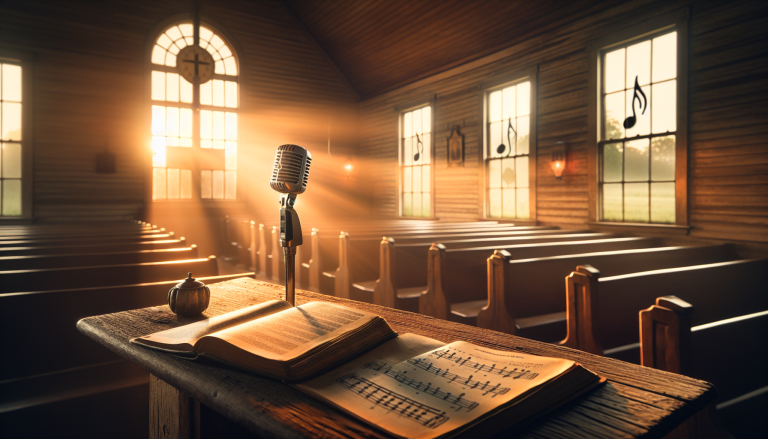The Resonant Roots of Gospel Music: America’s Sacred Soundscape
In the vast tapestry of American music, gospel music stands as a luminous strand—deeply soulful, richly textured, and profoundly tied to the spiritual life and cultural history of the nation. Born from the fervent congregations and resilient communities of African Americans in the 19th century, gospel has carved an indelible path through music history, shaping not only religious expression but also the very fabric of secular genres from soul to rock and beyond.
Historical Context: From Spirituals to Gospel’s Golden Age
To understand gospel music, one must journey back to the crucible of American slavery, where African musical traditions collided with European hymnody in the crucible of oppression. Enslaved Africans, denied literacy and freedom, wove their ancestral rhythms and call-and-response patterns into Christian hymns, creating spirituals—songs of hope, resistance, and clandestine communication. These spirituals are the seedbed from which gospel music sprouted.

Post-Civil War, the Great Migration carried these sacred sounds north, threading them through burgeoning urban centers where African American communities sought not only survival but self-expression. By the early 20th century, the informal hymn-sings evolved into more structured church choirs, and gospel music began to take shape as its own distinctive genre. Thomas A. Dorsey, often hailed as the “Father of Gospel Music,” fused the sacred and secular worlds, blending blues rhythms with religious lyrics. His 1930 composition, “Precious Lord, Take My Hand,” became an anthem of comfort and resilience, echoing through church halls and civil rights marches alike.
Genre Description: The Sound of Faith and Fire
Gospel music, at its core, is a vibrant dialogue between the divine and the human spirit—a musical narrative of praise, lamentation, and fervent hope. Its signature features include powerful vocals marked by emotional intensity, call-and-response patterns that mirror communal worship, and dynamic rhythms that uplift the soul. Instruments often accompanying gospel vary—pianos, Hammond organs, drums, and electric guitars weave together, supporting voices that soar or reach deep into heartfelt confession.
The genre’s spectrum is broad: from the a cappella spirituals of rural churches to the big-band gospel of the 1940s and the contemporary gospel blend with soul and R&B influences seen today. Yet, every form shares an unmistakable core energy—music born from faith experiences, meant not only to entertain but to inspire and transform.
Key Artists and Groups: Architects of a Sacred Sound
No discussion of gospel music’s architects is complete without Thomas A. Dorsey, whose compositions and arrangements laid the foundation for all gospel music that followed. His influence extends beyond his own recordings to the countless artists inspired by his hymns of hope and salvation.
Mahalia Jackson, known as “The Queen of Gospel,” carried Dorsey’s music into the public consciousness with her majestic contralto voice and stirring delivery. Her performances at the 1963 March on Washington gave iconic emotional resonance to the civil rights movement, intertwining gospel music with American social justice history.
Sister Rosetta Tharpe, a pioneer of gospel’s electrifying crossover appeal, wielded the electric guitar with unparalleled zeal, bridging gospel and early rock & roll. Her recordings brought gospel’s fervor to wider audiences and influenced legends such as Elvis Presley and Chuck Berry.
Later, groups such as The Dixie Hummingbirds and The Staple Singers expanded gospel’s reach, blending traditional sounds with contemporary social themes, embodying gospel’s evolving dialogue with American culture.
Notable Songs and Albums: The Hymns that Echo through Time
“Take My Hand, Precious Lord” remains a masterpiece of gospel music history, its plaintive melody and pleading lyrics offering solace during turbulent eras. Mahalia Jackson’s renditions captured a vulnerability and strength that continue to resonate.
Sister Rosetta Tharpe’s “This Train” exemplifies gospel’s rhythmic energy and spiritual fervor—its infectious beat and urgent vocals laying groundwork for future genres. The Staple Singers’ “Respect Yourself” married gospel’s ethical imperative with social empowerment, blurring lines between sacred and secular messaging.
Albums such as Andraé Crouch’s “I’ll Be Thinking of You” brought contemporary gospel into new sonic spaces, incorporating lush arrangements and modern production, expanding gospel’s audience without sacrificing its spiritual core.
Today, artists like Kirk Franklin and Yolanda Adams push gospel music forward, blending traditional themes with hip-hop, R&B, and pop, ensuring gospel music’s vibrancy endures.
Lasting Effects: Gospel’s Pervasive Pulse in American Music
Gospel music’s lasting effect on American music is as profound as it is pervasive. Its vocal techniques—melismatic runs, dynamic contrasts, emotional rawness—have become staples across genres like soul, blues, rock, and hip-hop. The emotional immediacy and communal spirit of gospel underpin many contemporary music experiences, providing a lineage that traces back to those early spirituals sung under the shadow of hardship.
Beyond sound, gospel has left an indelible mark on American culture and society. It endowed the civil rights movement with anthems of hope and resilience, nurturing a music that could galvanize as much as uplift. As the musical historian Eileen Southern noted, “Gospel music is perhaps America’s most enduring contribution to the world’s musical landscape.”
In sacred spaces and stadiums alike, gospel remains a living tradition—a vibrant dialogue between history and present, pain and joy, earth and heaven. To listen is to hear the very heartbeat of American music itself, echoing across time with a message both eternal and immediate: that through music, the human spirit finds its most profound expressions of faith and freedom.